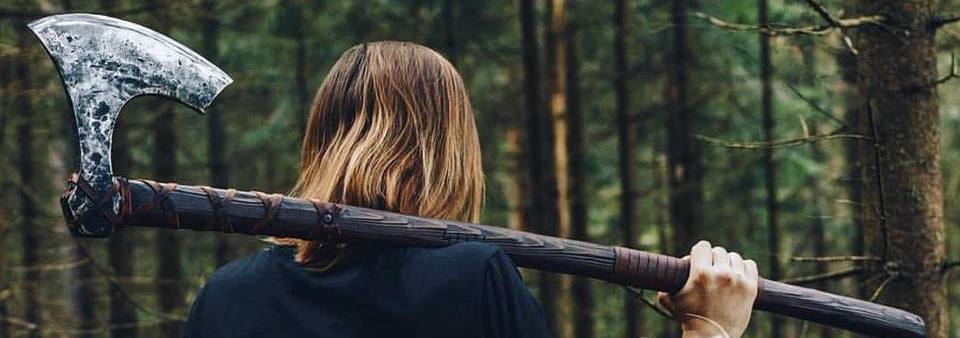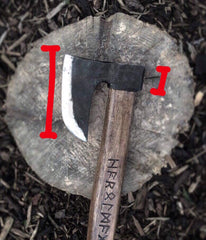on all orders over $100
on all orders over $100

The Vikings were famous for being skilled warriors, but the reality is they were much more than just that. They were a resourceful and ingenious people, who adapted to survive in many inhospitable environments and had a huge impact on the formation of modern Europe.
They often made use of axes as weapons due to the fact that they were a common tool and were inexpensive when compared to swords. It was only the richer or higher status Vikings who would have been able to afford swords, which were often the most valuable possession of a Viking and would be passed down through the family. In contrast the axe was very much the weapon of choice for the common man.
The ‘bearded’ axe, also known as the ’skeggøx’ was a type of Viking axe that was thought to have originated in Scandinavia prior to the Viking Age and has been traced back as far as 600 BC. Replicas have been found at Viking historical sites throughout Scandinavia, England and Scotland.
Various different types of this axe exist, however all of them share some similar features which give the bearded axe some key advantages over traditional axes. The viking age axes are often split up into different categories depending on their use. Some designs, such as the 'dane axe' were longer and wielded in two hands, these were specifically designed for battle, whereas others we're more common axe designs that were used as tools in everyday life which were also used as weapons.

The bearded design is characterised by the longer bladed section or ‘beard’ which extends below the butt of the axe. Any axe where the blade extends some distance below the butt of the axe is technically classed as a bearded axe, in contrast to the Native American tomahawk and earlier Bronze Age and Iron Age axes.
There were a number benefits to this design which made it a fearsome weapon and gave it an edge over swords and other types of axes. One of the main advantages of using axes over swords is that they were generally much lighter due to them having a larger wooden section and less heavy metal. The bearded axe design goes further in increasing this advantage. The fact that the blade extends lower allows for a much longer cutting edge when compared to traditional axes whilst keeping the weight to a minimum. This allows the bearded axe to be wielded easily in one hand and made it a fast and deadly weapon in the hands of a skilled Viking Warrior.
Another advantage of this design was that it had the ability to provide protection for the hand of the user when held behind the blade. This also allowed the user to hold the axe closer to the top which gave them more control, a big advantage in close quarters combat.
The beard of the axe could also be used as a hook to grab the weapons of an opponent or to hook a shield and disarm them, opening them up for subsequent strikes. Some variations of this design have a sharp and pointed beard allowing for better hooking of shields or piercing of armour.
The added blunt force trauma that an axe could deliver was a big advantage against an armoured opponent, since the weight was distributed differently to a sword there was more impact with an axe, therefore even if the opponents armour was not pierced there would still be much more concussive damage.
If you are interested in getting your own skeggøx then check out our armoury.
We have years of experience providing our customers with high quality, handmade bearded axes which are forged and assembled by hand using the same methods as the Vikings themselves.
We can also do customised rune engravings on the handle, to give your axe an extra personal touch, or even build a custom design of your choice from scratch.
Check out some of our favourite designs below:
Leave a comment